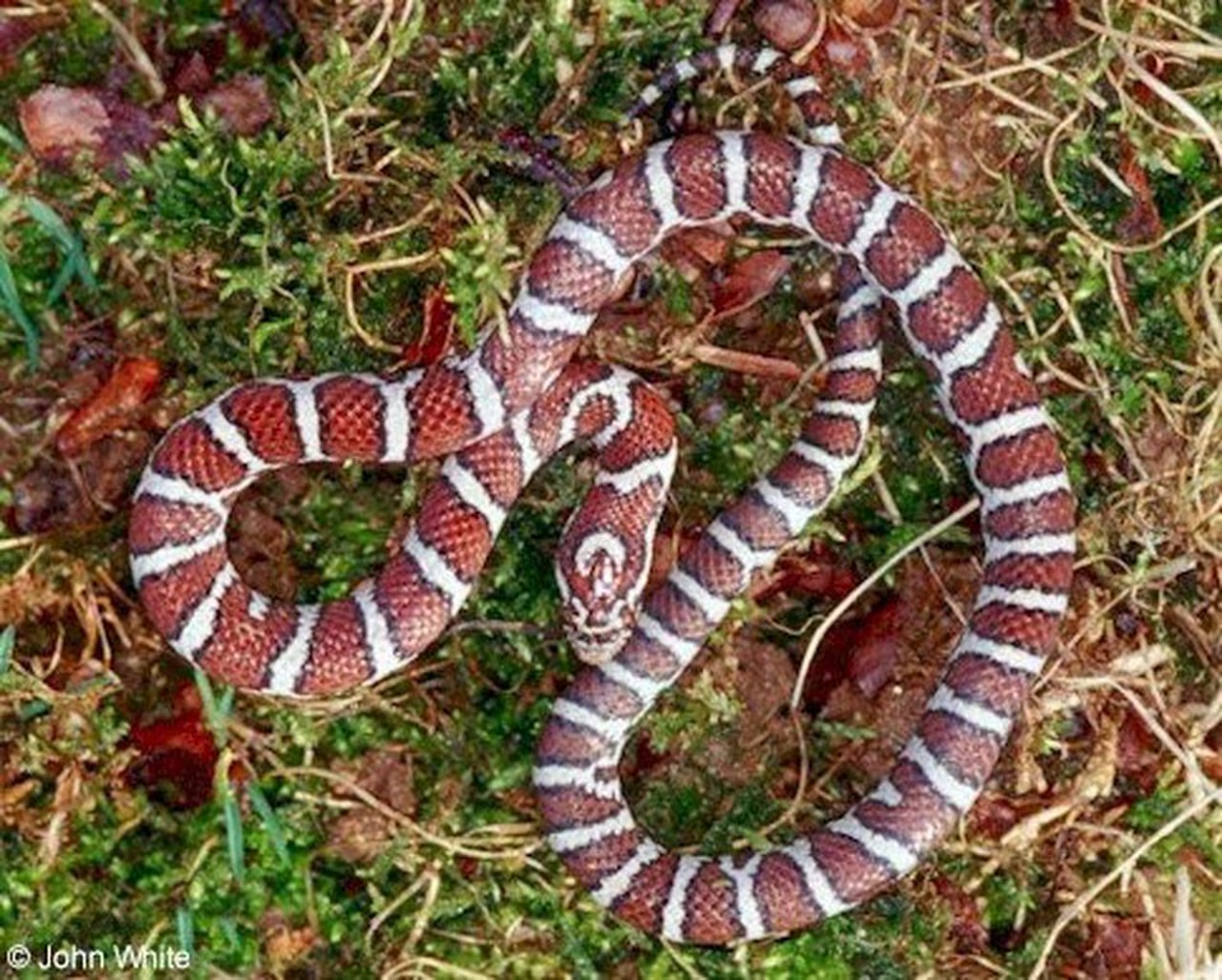Geckos are surprisingly common in Arizona, with more than 50 species to be found.
While they’re often associated with humid and tropical locales, you can find them throughout Arizona, especially during the summer months when many species go into estivation (a form of hibernation).
The following list of the different types of Geckos in Arizona will acquaint you with some of their habits and habitats so you can be on the lookout for these fascinating reptiles.
1. Desert Banded Gecko
This is the first on our list of types of Geckos in Arizona. The Desert Banded Gecko is found throughout most of Arizona’s southwest and central parts.
These types of Geckos in Arizona can be identified by a pattern that contains alternating light brown, dark brown, and white bands on their backs.
The Desert Banded Gecko is typically found on rocky outcroppings where it hunts for prey. Desert-banded geckos are omnivores, meaning they eat both plants and animals.
They mostly hunt for insects but will also eat other small animals like lizards or rodents if they come across them during hunting.
The average size for a Desert Banded Gecko is about two to four inches long from nose to tail, though females tend to be larger than males.
These types of Geckos in Arizona look similar to other subspecies of Western banded geckos, but they have some distinct differences.
One difference is the size of their bands, which may be either very large or very thin depending on what area they live in.
Desert Banded Geckos also have relatively large eyes with vertically slit pupils, while Western Banded Geckos have smaller eyes with round pupils.
2. Tucson Banded Gecko
This is also one of the types of Geckos in Arizona. These gecko species live on trees and bushes, while one lives underground.
The Tucson Banded Gecko (Coleonyx variegatus bogerti) is often found in southern Pima and southeast Cochise counties. This variety has a thin brown band that runs from head to tail around its body.
It feeds on spiders and beetles, which it catches by pouncing or waiting for them to come close enough to grab with its long, sticky tongue.
This subspecies prefers similar habitats to other geckos found in Arizona, such as grasslands, hillsides, dunes, rocky outcroppings, and valleys.
They do not burrow underground as many other geckos do. But instead, they hide beneath stones, tree bark, and under leaf litter.
3. Utah Banded Gecko
The Utah Banded Gecko (Coleonyx variegatus utahensis) is a small species found only in Arizona and central Utah. It can grow up to six inches long and has brown, tan, and grey bands.
The underbelly is yellow with a dark stripe from the snout to the groin. Males have larger bands than females and a tail that grows larger as they age. They are nocturnal and eat crickets, grasshoppers, beetles, spiders, ants, and other insects.
These types of Geckos in Arizona are not picky about where they live; they can be found near water or among large rocks or boulders.
They prefer to live in habitats like grasslands, sagebrush deserts, canyons, hillsides, rocky outcroppings, and forests.
At night, they come out of their hiding spots to hunt for food while avoiding being eaten. Some predators include snakes, hawks, foxes, coyotes, owls, and even humans!
4. Mediterranean House Gecko
The Mediterranean house gecko is native to southern Europe but has been introduced to some other parts of the world. This small lizard is a common sight on buildings and walls where they eat insects and spiders.
These types of Geckos in Arizona do not have large toe pads that allow them to walk up vertical surfaces like many other geckos.
They may live on your wall or patio for years before you notice them because they are nocturnal creatures and stay out of sight during the day.
They are currently found all over urban areas in Arizona, including Tucson, Phoenix, and Flagstaff. Female Mediterranean house geckos lay one egg at a time after mating with multiple males. A single clutch can produce as many as ten offspring.
5. Western Banded Gecko
This medium-sized gecko is usually green with brown and orange bands. The Western Banded Gecko is found in Arizona, California, Nevada, Utah, Colorado, and Mexico.
They are nocturnal lizards that can grow up to 10 inches long. They live in burrows under rocks or piles of wood daily and hunt insects at night.
These types of Geckos in Arizona are typically pink and light yellow with brown crossbands running from head to tail.
They have five toes on their hind feet but four on their front feet, which gives them the ability to climb well.
These types of geckos in Arizona have a diet consisting of small insects, spiders, scorpions, centipedes, and other invertebrates.
They mate in early spring when there’s plenty of food; they lay eggs which hatch into baby Western Banded Geckos after three months; females produce 2-5 eggs per clutch.




